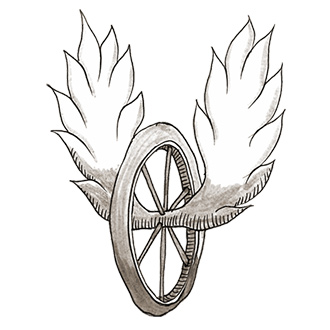
Related Questions
- Will cars ever be able to drive themselves?
- How can a person ride a motorcycle 100 mph but not stand up in a 100 mph wind?
- Why can’t cars run on water instead of gasoline?
- Can helicopters fly upside down?
- How does an aircraft steer while taxiing on a runway?
- What is the relationship between the length of a boat and its maximum speed?
- How does an airplane stop on a runway after landing?
- Can a honeybee cause a sonic boom if it travels fast enough?
- How does a jet engine work?
- What are the future propulsion systems for interplanetary travel?
Why does traffic bottleneck on freeways for no apparent reason?
Drivers tend to flow remarkably well as a pack — until there’s an unusual event…
By Peter DunnWhen something disturbs the normal course of traffic, the effects can last for a surprisingly long time after the incident itself is gone, and affect areas far from the initial problem.
“Maybe a dog runs into the road,” says Moshe Ben-Akiva, professor of civil and environmental engineering and director of the MIT Intelligent Transportation Systems program. “Maybe people slow down to look at something. Maybe someone cuts someone off and they start arguing. The cars at the front get moving again after a couple of minutes, but cars behind them still have to stop and queue up. It’s like a shock wave that moves upstream.”
The phenomenon is portrayed eloquently in MITSIMLab, a traffic simulator developed at MIT in the 1990s with funding from Boston’s Big Dig highway project. During a recent demonstration of the software, graduate student Samiul Hasan set up an animated map of downtown Boston highways to simulate traffic on a typical weekday morning.
Thousands of colored rectangles representing individual cars, trucks, and buses ply the roadways, each moving according to its own parameters for desired speed and driving habits, which include following distance and “gap acceptance.” The overall model reflects the distribution of driving behaviors aggregated from traffic models that are based on video studies conducted in Boston, Los Angeles, San Francisco, and other locales.
When Hasan introduces a traffic blockage (or “incident scenario”), the simulated vehicles immediately begin backing up. The line quickly extends to a quarter-mile, then a half-mile. Nearby entrance and exit ramps become blocked, and some vehicles jockey assertively between lanes.
After a few minutes of simulator time, Hasan clears the simulated incident, and the front-most vehicles quickly speed off. But just as Ben-Akiva explained, for over ten minutes after the clearance of the initial problem, cars are still coming to a complete stop at the back of the line – far upstream from the original source of the traffic jam. Although hundreds of vehicles were affected, only the handful in the first few rows would have seen any evidence of the cause.
While not much can be done to prevent random incidents, Ben-Akiva’s team is working to reduce the consequences with a predictive simulator (DynaMIT) that takes input from roadway sensors and forecasts future traffic conditions. It can then generate guidance strategies and convey them to drivers via methods such as electronic road signs that provide messages or lane guidance. Good for travel time — but likely to create even more situations where drivers don’t get to see what’s holding them up.
Posted: February 19, 2009